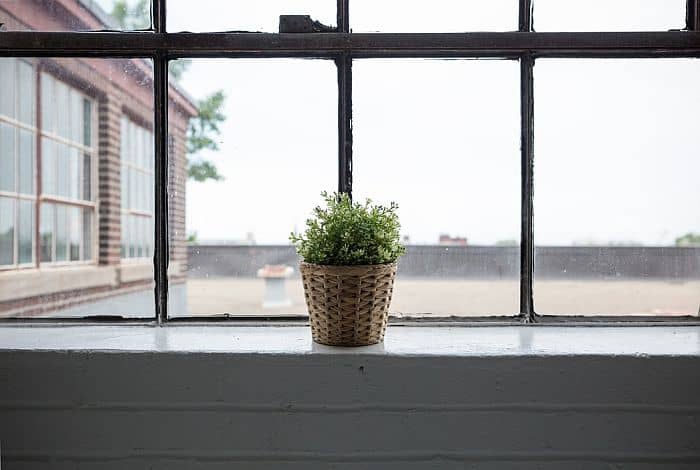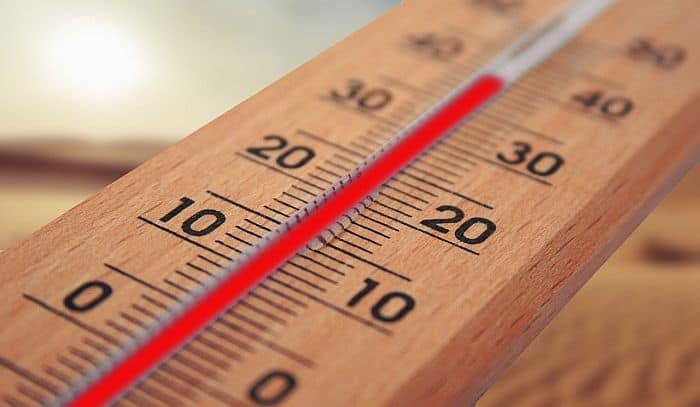If you live in an area with cold winters, you may have no choice but to bring your lavender indoors. Now what? Considering that it prefers full sun, can it survive in your house, much less thrive?
Good news — with the right care, it can do both! In this article, I’ll explain how to care for lavender plants indoors.
Contents
How To Grow Lavender Indoors
Only Do It If You Must (Or Have Enough Light)

It’s best to only grow lavender indoors during the colder months, in order to protect it. HGTV explains that due to inadequate light, an indoor lavender plant may not grow as well as it could outdoors.
While you should try to keep your lavender’s roots alive, don’t expect much new growth unless you have adequate light.
Additionally, according to Lavender Hill Farm, lavender roots grow outward instead of downward. They explain that as a result, lavender shouldn’t be kept in a pot. It’s fine to grow it in a pot when it’s small, but you should plan to plant it in the ground eventually.
Choose A Suitable Variety

If you haven’t yet bought your plant, YouTuber Donna Joshi recommends French lavender as the easiest variety to grow indoors:
In addition to French lavender, HGTV recommends Canary Island and fern leaf lavender. They clearly state that the latter is relatively tolerant of “wet conditions,” although their wording makes it unclear if the former is.
Additionally, if you plan on transplanting your lavender outdoors in the spring, it should be compatible with your local climate. If you happen to live in Florida, here’s a guide to the varieties that do well in Florida’s hot, humid climate.
Have The Right Equipment
To grow plants indoors or outdoors, you need the right equipment. For indoor lavender, it’s good to have:
- A container*
- Potting mix*
- Limestone gravel*
- Lime*
- Crushed seashells*
- A water collection tray
- A hand trowel
- A watering can
- Fertilizer
- Pruning shears
- Supplemental lighting*
Click here for a shopping guide on indoor gardening supplies.
* – I’ll elaborate on these items later.
Get A Good Container
It’s very important to choose the right container for lavender, as excess moisture can kill it. So definitely choose a pot with drainage holes. HGTV recommends using a terracotta pot, as its porousness can help control moisture.
Container size is more important than you might think. HGTV explains that while roots soak up moisture, they can’t reach it if there’s excessive soil around them. This can lead to waterlogged soil and root rot. For this reason, you should choose a container that’s one-to-two inches bigger than your lavender’s rootball.
Donna, in her YouTube video, also points out that a large, heavy container is hard to move. It’s important to be able to turn your container, which I will explain in the next section:
Provide Enough Light

According to Gardener’s Supply Company, lavender needs at least three-to-four hours of direct sunlight a day. Garden Design recommends at least eight hours. In either case, a south-facing window is ideal if you live in the northern hemisphere, as it receives the most light.
If you’re able to, Donna suggests putting your lavender outside for about eight hours a day. Obviously, your climate has to be warm enough.
If your lavender seems to struggle even by a south-facing window, you may need supplemental lighting. HGTV recommends suspending standard fluorescent tube lights, 6 to 12 inches above your lavender.
Regular LED lights or cheap LED grow lights may also work, as long as they provide enough of the right kind of light. Click here for my guide to understanding grow lights.
Lastly, to make your plant grow uniformly, Gardener’s Supply Company says to rotate it weekly to expose all sides to direct sunlight.
Use The Right Growing Medium
Your growing medium matters as well. HGTV says to fill the bottom of your container with one-to-two inches of limestone gravel and cover it with soilless potting mix blended with a tablespoon of lime.
Lavender thrives in the pH range of 6.7 to 7.3, but it can tolerate a pH as low as 6. In addition to lime, you can mix crushed seashells into the potting mix to increase its pH.
Keep Track Of Temperatures

Gardener’s Supply Company states that from spring to mid-fall, the ideal daily temperature for lavender is 70F (21.1C), whereas ideal nightly temperatures are 50 – 55F (10 – 12.8C). Through late fall and winter, daily temperatures should be 60 – 65 degrees F (15.6 – 18.3C) and nightly temperatures 45 – 50 degrees F (7.2 – 10C).
HGTV cautions that you should keep lavender away from drafts, hot or cold.
Water It Well
When you water your lavender, Donna says to stop when the water seeps through the pot’s drainage holes. And don’t let the soil stay soggy, says HGTV, as this can cause root rot. Between waterings, both say to let the potting mix get slightly dry an inch down.
Fertilize It Sparingly
According to Florida Today writer Sally Scalera, fertilizing lavender can make it less fragrant by making it produce fewer essential oils. If you decide to fertilize yours, Donna recommends doing it about every six months. Wilson Bros Gardens says to fertilize container-grown lavender in early spring and in early summer, if needed.
Prune It Properly
To prevent disease, Sally says to immediately remove any parts with discolored or wilted leaves. Cut below the diseased-looking parts through some healthy tissue to make sure the disease can’t spread.
She also recommends removing faded flowers to encourage your plant to grow new ones. Click here for a more in-depth guide to pruning lavender.
FAQs
Can Lavender Be Grown Indoors?
HGTV recommends only growing lavender indoors during the winter, in order to protect it in colder climates. Plant your lavender in a well-draining potting mix with a pH of 6.7 to 7.3. Gardeners.com recommends giving it at least three to four hours of direct sunlight a day, although more is better.
How Long Does It Take To Grow Lavender Indoors?
According to HGTV, lavender seeds may take a month to germinate, although some germinate in only two weeks. They also state that lavender may take one to three months to become transplantable. Lavender may grow more slowly indoors due to reduced sunlight.
Does Lavender Need Direct Sunlight?
Gardener’s Supply Company recommends at least three-to-four hours of direct daily sunlight for lavender. However, Garden Design says it needs at least eight hours. If your lavender doesn’t thrive in a south-facing window, you may need to get a grow light.
And That’s How To Care For Lavender Plants Indoors
For a recap on how to care for lavender plants indoors, make sure you meet these requirements:
- Use a pot that’s one-to-two inches bigger than your plant’s root ball.
- The pot should have drainage holes.
- Use a well-draining potting mix with a pH of 6.7 to 7.3.
- Expose the plant to at least three-to-four hours of direct sunlight daily.
- Let the potting soil get dry between waterings, down to an inch.
- To prevent disease, remove discolored or wilted parts.
- Fertilize lavender sparingly or as needed; you can use a vegan fertilizer.
If you have any questions, please post them in the comments!
